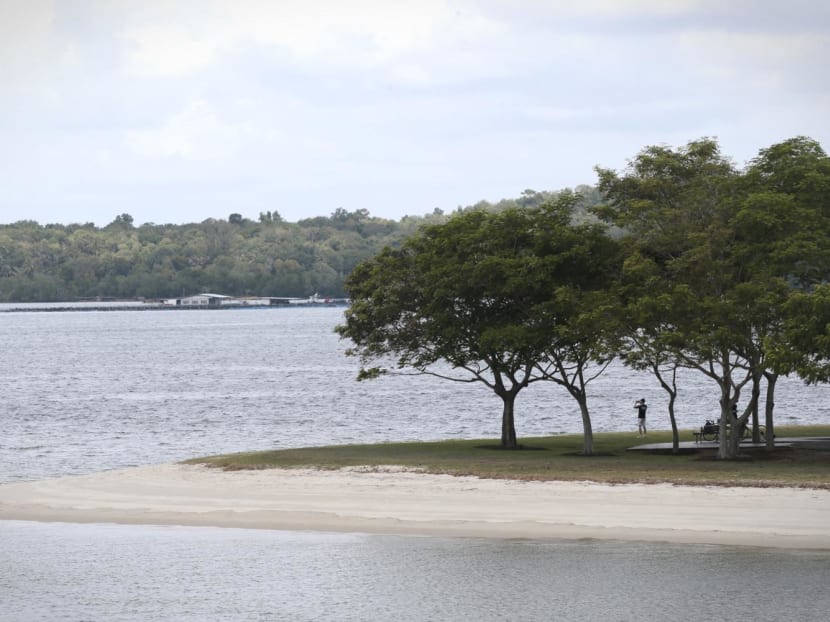S$23.5m research programme launched to look at long-term impact of climate change on S'pore
SINGAPORE — To plug key knowledge gaps on the impact of climate change and sea-level rise on Singapore, a S$23.5 million research programme was launched on Tuesday (July 12) by the Centre for Climate Research Singapore at the National Environment Agency (NEA).

- A S$23.5 million research programme was launched on Tuesday (July 12) by the Centre for Climate Research Singapore
- The Climate Impact Science Research programme will last for five years, with "around 15 to 20" projects studying five key areas of research
- They are: the rise of sea levels, water resource and flood management, biodiversity and food security, human health and energy, and science-policy translation
SINGAPORE — To plug key knowledge gaps on the impact of climate change and sea-level rise on Singapore, a S$23.5 million research programme was launched on Tuesday (July 12) by the Centre for Climate Research Singapore at the National Environment Agency (NEA).
The Climate Impact Science Research (CISR) Programme, which will last for five years, will focus on the following five key areas of research:
- The rising of sea levels
- Water resource and flood management
- Biodiversity and food security
- Human health and energy
- Science-policy translation, which will help government agencies make understand climate change risks to plan effective interventions
Dr Dale Barker, director of the department of climate research at the centre, said that research uncovered by the 15 to 20 projects funded by this programme are intended to inform policymaking and infrastructure implementations.
He added that the CISR programme complements the previous National Sea Level Programme — a S$10 million research programme launched in 2019 focusing on the impacts of sea level rise on Singapore and Southeast Asia — while branching out into other areas impacted by climate change.
One example, he said, is the increasing threat of vector-borne diseases such as dengue.
“The mosquito breeding cycle is related to the temperature. So as temperature rises (due to climate change), that’s going to affect the prevalence of dengue,” Dr Barker said.
Elaborating further on the key areas of research, NEA said that research on water resources and flood management practices, for example, will aid in planning flood mitigation measures such as detention tanks and right-sizing of our drainage network.
The CISR was launched during the third Sea Level Conference on Tuesday at the Sands Expo and Convention Centre, where various speakers talked about the impact of rising sea levels in Singapore and globally.
Among the speakers was Professor Benjamin Horton, director of the Earth Observatory of Singapore, who said that tropical islands near the equator such as Singapore are highly affected by melting ice sheets.
“When ice sheets are at their maximum extent, they have a large mass and pull the water towards the poles. But when those ice sheets melt, the water retreats away from the poles… so the greatest effect is found in tropical localities such as Singapore,” he said.
He also said that there are “very many complex interactions between ocean currents and atmospheric currents” in the region, such as having "complex tectonic situations that will cause land to uplift or subside during, or between, earthquakes".
Ms Grace Fu, Minister for Sustainability and the Environment who announced the new project at the event, said during her speech that despite the region’s importance in the global climate system, scientists have found it challenging to model its climate, especially its precipitation.
The region, she added, exchanges “huge quantities of heat and moisture, and fueling global atmospheric and ocean circulation”.
Referring to a United Nations report, which revealed that over 30 per cent of global crop and livestock areas could become climatically unsuitable by 2100, she said: “By downscaling global climate projections and producing localised, high-resolution models of wind, rainfall, and temperature, we can better assess the impacts of climate change on local crop and aquaculture yields.
“We could also evaluate the indirect impacts of higher temperatures through the increased prevalence of pests and diseases. This would in turn allow us to strengthen our food resilience, be it through the development of climate-resilient crop varieties or choosing sea spaces with more suitable habitat conditions for aquaculture.”








